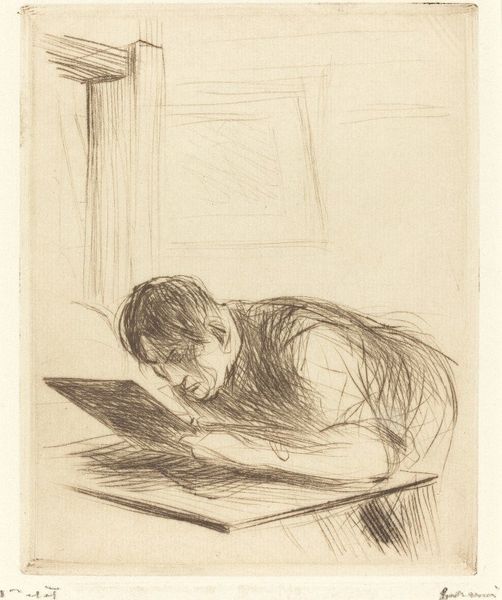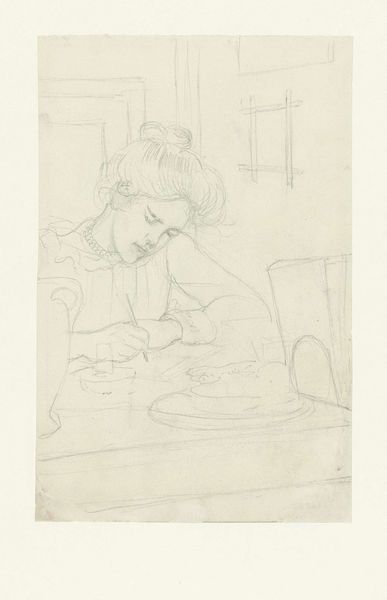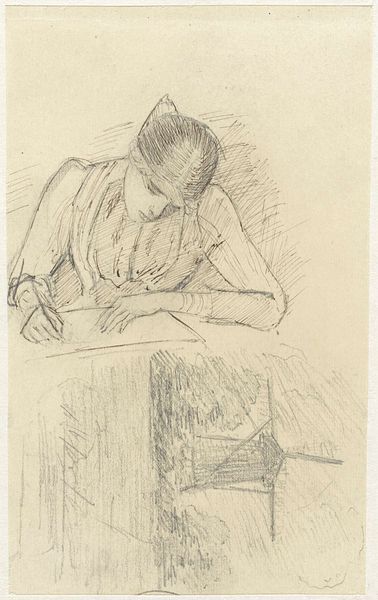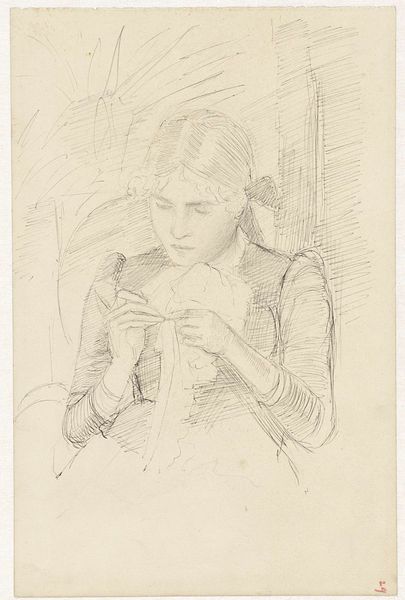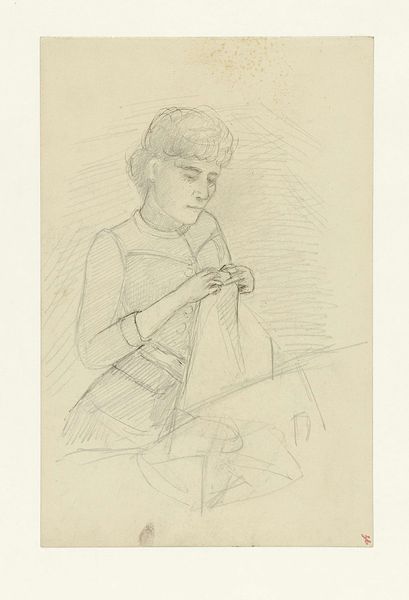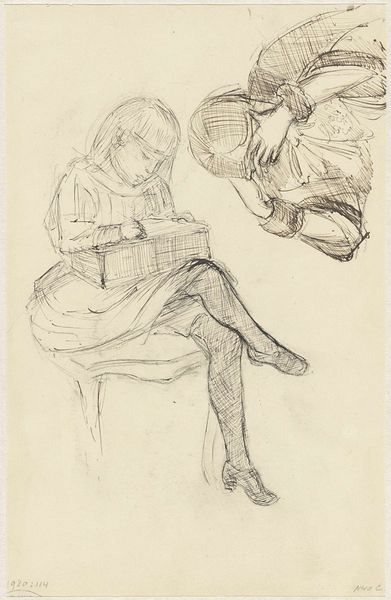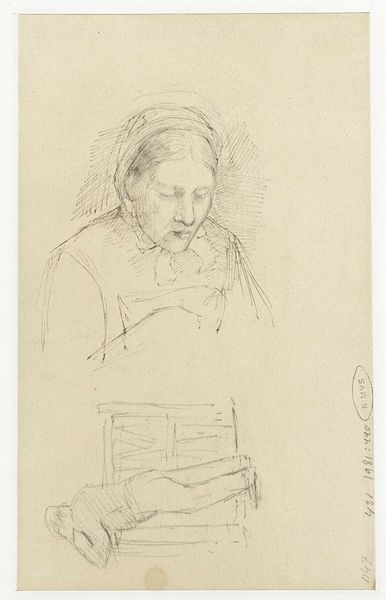
drawing, pencil
#
portrait
#
drawing
#
light pencil work
#
pencil sketch
#
figuration
#
pencil
#
sketchbook drawing
#
genre-painting
#
academic-art
#
realism
Dimensions: height 250 mm, width 163 mm
Copyright: Rijks Museum: Open Domain
Curator: Here we have a pencil drawing by Jozef Israëls, known as "Portret van een vrouw, van opzij," dating from 1834 to 1911. Editor: It’s incredibly delicate, isn't it? There's almost a whisper of presence here. I’m drawn to the soft hatching and the way the light seems to emanate from the page itself. Curator: Israëls, celebrated for his intimate genre scenes and portraits, especially of the Dutch working class, frequently used drawings like this to explore character and composition. One wonders about the social positioning of this particular sitter… was this commissioned, or was it an exercise? Editor: The very visible pencil strokes highlight the labor of image creation, making this feel less like a grand statement and more about the act of seeing and recording. Her lacy collar, the rendering of her dress – it shows careful observation of everyday textiles, elevating them through close representation. Curator: Precisely. The setting is vague, really secondary to conveying the woman's apparent introspection. It subtly suggests broader social themes of quiet dignity, and perhaps the emotional lives of ordinary women, within a culture that constrained them in so many ways. Editor: Absolutely. There’s a sense of restraint not just in the subject’s pose, but also in the medium itself. Pencil feels so direct, so unpretentious in comparison to oils or sculpture, perfectly capturing the unassuming character of this sitter and possibly revealing Israëls focus on accessibility of materials. Curator: The Realist movement to which Israëls belonged definitely favored truthfulness to accepted, academic beauty. It shifted aesthetic focus towards humble subjects in reaction to powerful structures within both society and artistic spheres. Editor: I agree. He isn’t idealizing her. Instead, we have a human connection across time forged with nothing more than paper and graphite, celebrating the worth found in everyday things and challenging conventional notions of artmaking through this directness. Curator: Thank you for offering such grounded insights! I believe your material considerations broadened my appreciation significantly. Editor: My pleasure. Examining the physicality of art provides a grounding influence to understanding artistic agency.
Comments
No comments
Be the first to comment and join the conversation on the ultimate creative platform.
